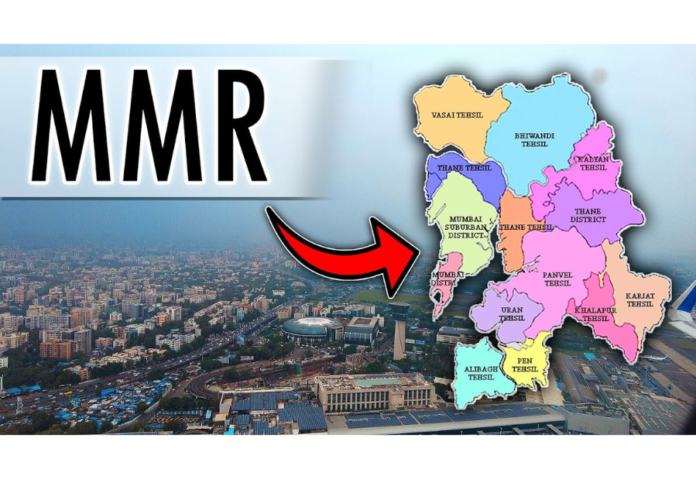
-
With connectivity augmentation, BKC will witness a 1.5x rise in annual office leasing.
-
Enhanced connectivity to increase homogenization of housing prices in Western suburbs
-
Infrastructure upgrade and retrofitting key for office demand revival in Old CBD presents INR 200 crore investment potential.
-
In anticipation of the upcoming infrastructure, Central Mumbai will see about 5 million sq. ft. of new Grade-A office supply.
-
Planned data centre investments of about USD 3–4 billion in Navi Mumbai, location potential maximised by infrastructure push
Mumbai, October 9, 2023: With four key infrastructure projects of MMR-Mumbai metro, especially the lines that are set to be operational by 2024, Mumbai Trans Harbour Link (MTHL), and Phase 1 of both the Coastal Road Project (CRP) and Navi Mumbai International Airport (NMIA), getting closer to completion, the real estate market of the region is envisaged to see heightened activity. As per Colliers’ latest report “MMR Infrastructure – Upgrading Real Estate”, in tandem with improved connectivity, commercial office micromarkets in BKC and Western suburbs will see an uptick in annual leasing. The traditional micromarkets of old CBD and central Mumbai are set to receive a major facelift, while the satellite market of Navi Mumbai will offer a plethora of real estate opportunities.
|
Major infrastructure projects with high impact potential on MMR real estate in the medium term |
|
|
Project |
Details |
|
Mumbai Metro |
Lines 2B, 3, 6, and 12 are set to be operational by 2024 (referred to as Cluster 1 in the report). |
|
Mumbai Trans Harbour Link (MTHL) |
21.8 km long sea bridge connecting Sewri and Chirle |
|
Coastal Road Project (CRP): Phase 1 |
10.6 km section from Princess Street Flyover at Marine Lines to the Worli end of the Bandra-Worli Sea Link |
|
Navi Mumbai International Airport (NMIA)—Phase 1 |
Operational Readiness and Airport Transition (ORAT)—to be achieved by December 2024 |
While coverage and usage adoption are of paramount importance in determining the success of upcoming infrastructure projects in the real estate growth story of MMR, timely completion is equally critical in achieving the desired socio-economic outcomes. Moreover, the projects will have a multiplier effect in the region, where it will not only reduce the burden on the existing infrastructure but boost the overall economy of the region. Decongestion, connectivity improvement and a sustainable growth across micro markets are likely to solidify MMRs preferred positioning for real estate investments in India.
Expected impact of the upcoming infrastructure upgrade on office market of key business districts within MMR
|
|
Annual gross leasing potential (2025 onwards vs. 2022) |
Likely supply infusion (till 2026) |
Weighted average quoted rental appreciation scope (2025 onwards vs. 2023) |
|
BKC and Annexe |
1.5x (1 msf in 2022) |
~7 msf |
~5-10% (>INR 270/sf/month as on date) |
|
Western suburbs |
1.5x (1.3 msf in 2022) |
~13 msf |
~5-10% (>INR 120/sf/month as on date) |
|
Old CBD |
~10-15% increase (0.1 msf in 2022) |
– |
~5-10% (>INR 210/sf/month as on date) |
|
Central Mumbai |
1.5x (0.8 msf in 2022) |
~5 msf |
~5-10% (>INR 170/sf/month as on date) |
|
Navi Mumbai |
>20-25% increase (2.0 msf in 2022) |
~9 msf |
~10-15% (>INR 60/sf/month as on date) |
Note: The data pertains to Grade A office buildings. Weighted Average Quoted (WAQ) rents are in INR per square foot per month for warm shell offices and do not include common area maintenance (CAM) or taxes.
Western suburbs: Andheri, Andheri-Kurla Road, Vile Parle, Chandivali, Malad, Kandivali, Borivali, Goregaon, Jogeshwari, and Santacruz West
BKC and annexe: BKC, Bandra, Kalina, and Santa Cruz East
Old CBD: Nariman Point, Ballard Estate, Churchgate, Cuffe Parade, Fort
Central Mumbai: Lower Parel, Parel, Dadar, Matunga, Mahalaxmi, Byculla, Chinchpokli, Mazgaon, Kalachowki, Worli, Prabhadevi, Elphinston, Haji Ali, Mahim
Navi Mumbai: Airoli, CBD Belapur, Ghansoli, Juinagar, Kalamboli, Kharghar, Mahape, Nerul, Pawne, Rabale, Sanpada, Seawoods, Taloja, Turbhe, Ulwe, and Vashi
Badal Yagnik, Chief Executive Officer, Colliers India, said: “The upcoming metro lines, especially those likely to be operational in the next 1-2 years, will play a key role in decongesting areas like BKC and Western suburbs to a large extent. BKC, in particular, stands to benefit the most from improved connectivity. With improved connectivity, BKC is likely to witness 1-2 msf of annual office space uptake from 2025 onwards, a 1.5x increase compared to 2022 levels. Developers, too, have planned most of their upcoming projects in localities that are likely to witness the maximum benefit from enhanced connectivity in the entire MMR region.
A healthy visibility of the near- to mid-term demand and supply scenario will eventually firm up rentals across MMR. Average rentals in prominent micromarkets are likely to rise by about 5–10% by 2025 compared to current levels.”
BKC: Metro connectivity is likely to elevate annual office leasing 1.5 times from 2025 onwards.
Once operational, metro lines 2B (D. N. Nagar-Mandale) and 3 (Colaba-SEEPZ) will provide the much-needed augmentation of the public transportation system in BKC and the annexe, leading to a likely 1.5X annual leasing from 2025 onwards as compared to the 1 msf gross leasing in 2022. The upcoming supply of 7 msf in the next three years would increase the current stock (14 msf) in BKC and annexe by about 50%, with the largest chunk to be ready once the metro lines are operational. Moreover, elevated demand levels are likely to drive average monthly rentals of BKC and annexes higher by 5–10% by 2025 as compared to current levels.
Western Suburbs: Upcoming metro lines to increase homogenization of the residential market
Residential: While earlier, the average housing price declined as one moved northward in western suburbs, with the upcoming infrastructural development, a sense of homogeneity in housing prices is expected in the next few years. Moreover, with metro work reaching an advanced stage, the market holds immense potential for investments as the housing price differential, which was more than 80% in Dahisar (compared to Santacruz) a few years ago, has already moderated to less than 50%. Although the price differentiation within Western suburbs will continue to narrow down, overall residential prices in the area are likely to further head north in the next 2–3 years. Andheri, Jogeshwari, Malad, Goregaon, Lokhandwala, Kandivali, and Borivali have already witnessed a 5–10% rise in residential prices in the last 1-2 years.
Office: At the same time, led by improved connectivity, the micromarket will continue to see healthy office space uptake. From 2025 onwards, annual gross leasing in Western Suburbs has the potential to reach 1.5X times 2022 levels (1.3 msf). Notably, pockets within Western suburbs such as locations along Andheri-Kurla Road and Malad-Goregaon stretch, which are preferred locations for flex operators, could see further traction in the next 1-2 years and can become the flex hot spots of the region.
Old CBD: Infrastructure upgrade to breathe a new lease of life; INR 200 crore investment potential
With the completion of Phase 1 of the Coastal Road and MTHL, the entire Old CBD area will witness improved connectivity with Western suburbs, Central Mumbai, and Navi Mumbai. This much-awaited infrastructure upgrade holds innate potential to revive office demand in the micromarket, which would open fresh avenues for investments. Owing to the limited availability of new Grade-A office space, the micromarket provides a business case for the upgradation of select existing buildings, which stands at around 2 m2. The real estate space upgrade opportunity translates into an investment potential of about INR 200 crore.
Central Mumbai is Likely to witness heightened office activity, with demand set to come from under-construction developments.
The upcoming metro routes 3 (Colaba-SEEPZ), MTHL, and Phase 1 of Coastal Road will bolster connectivity with key business districts like the old CBD and BKC. In anticipation of the upcoming infrastructure upgrade, Central Mumbai has been on the radar of developers and occupiers for the last few quarters. With the likely infusion of fresh Grade-A supply having superior amenities, occupier interest is likely to continue in the next few years. Superior office amenities, in turn, would steadily drive the annual demand 1.5X times 2025 onwards compared to 2022 levels (0.8 msf). Recently, developers have also been optimising the commercial as well as residential redevelopment potential that the area holds. The report highlights that the area is likely to see about 5 msf of new office supply in the next 3 years, increasing the Grade-A stock by about 25–30%. Average quoted rentals are also likely to firm up by about 5–10% in the next 2-3 years, up from around INR 170/sf/month currently.
Navi Mumbai: Upcoming Infrastructure to holistically fortify the real estate ecosystem
Office: The completion of MTHL and development around the upcoming airport will transform the real estate landscape of Navi Mumbai. Led by enhanced connectivity, Navi Mumbai has the potential to witness about 20–25% higher annual leasing activity from 2025 onwards, compared to 2022 levels (2 msf). Moreover, the micromarket is likely to witness about 9 msf of supply infusion in the next 3 years, more than 75% of which pertains to IT stock.
Data Centres: At the same time, the report highlights that MTHL will be pivotal in connecting the data centre hotspots within Navi Mumbai with the rest of the region. MTHL will play a critical role in terms of infrastructure augmentation, including buttressing of dedicated power lines, which in turn will establish Navi Mumbai as a preferred destination for DC operators within MMR. In the next 3-5 years, investment to the tune of USD 3–4 billion has been planned in data centres in the micromarket.
“The upcoming infrastructure upgrade is likely to transform the real estate landscape of Navi Mumbai holistically across segments, including the residential sector. From an investor perspective, residential prices are especially likely to accelerate in areas like Uran-Ulwe, Panvel, Dronagiri, Kharghar, and Taloja. With multiple upcoming projects like MTHL, Phase 1 of the international airport, and metro connectivity, the office market of Navi Mumbai stands to benefit significantly. Moreover, sub-dollar rentals will continue to be advantageous due to the unique proposition offered by Navi Mumbai office markets. The micromarket is expected to see about a 20–25% rise in annual leasing from 2025 onwards as compared to 2022 levels. Navi Mumbai is also likely to account for about one-fourth of the upcoming supply pipeline for MMR in the next three years. Furthermore, all the infrastructure upgrades would solidify Navi Mumbai’s favourable positioning within MMR for DC operators and attract about USD 3–4 billion in investments for data centres in the next 3–5 years.” Vimal Nadar, Senior Director & Head of Research, Colliers India
Also read: HR Tech Adoption in MSMEs: Challenges & Solutions
Do Follow: CIO News LinkedIn Account | CIO News Facebook | CIO News Youtube | CIO News Twitter
About us:
CIO News, a proprietary of Mercadeo, produces award-winning content and resources for IT leaders across any industry through print articles and recorded video interviews on topics in the technology sector such as Digital Transformation, Artificial Intelligence (AI), Machine Learning (ML), Cloud, Robotics, Cyber-security, Data, Analytics, SOC, SASE, among other technology topics.





